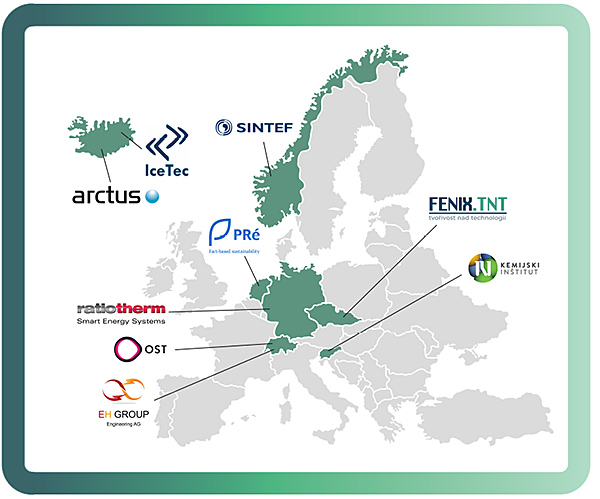Insight
Renewable electricity and heat can be produced cheaply today and short-term storage solutions for evening out mismatches between production and demand are available at low cost. Essentially, there would be enough energy if the sun could be used as a virtually unlimited source. However, most of the sun's energy comes in the summer but is needed in the winter.
In the cold season, the demand for heat is highest because the sun is not shining and while electricity from photovoltaics is cheap, it only comes during the day, and it comes less in winter. While balancing from day to night is not that difficult, technologies for shifting from summer to winter and storing renewables for longer time spans of months or seasons are scarce and costly - thus not widely used yet.
Power-to-gas solutions are being propagated: Water is split into oxygen and hydrogen by electrolysis, i.e. with electricity, and the hydrogen is stored. But hydrogen has a very low energy density. Per kilogram, hydrogen has an interesting energy density, but it is a gas, per volume the energy density is extremely low. Therefore, hydrogen would have to be put under enormous pressure of 300 or 600 bar, liquefied, or converted to hydrocarbons at considerable expense in order to store it. That would lead to the additional effort, higher costs, and a loss of efficiency.
The REVEAL project develops a game-changing and unique solution to this challenge, using the conversion of aluminium oxide into aluminium metal (Power-to-Al) in an environmentally friendly way to store renewable energy and produce a "renewable fuel" in the form of aluminium.
Aluminium does not have a very good reputation ecologically - because it needs a lot of energy in order to first produce aluminium oxide from the raw material bauxite and then aluminium.
However, if the energy put into it is firstly renewable or 'clean' and secondly stored in the material and not lost, then that is exactly the outcome desired: A material into which a lot of energy can be put per kilogram or per cubic metre and from which this energy can be obtained back later.
If aluminium is produced with today's technology, then about half of the energy used in production is stored chemically in the aluminium. If the aluminium is oxidised later, then this energy is released again.

Reveal Solutions
This ground-breaking technical solution will enable to store a large amount of energy with an unmatched energy storage density of over 15 MWh/m³ at an attractively low cost, without losses and with lower environmental impact than today's solutions. The easily transportable energy vector can be used for heat and hydrogen, or electricity production, wherever and whenever needed, in scalable units from a few kW to the MW range.
High-density storage solution will enable it to cover energy demands with flexibility also in small units and off-grid situations, and – above all – in seasons where the demand is much higher than local renewable production could possibly cover.
Therefore, with the emerging technology of carbon-free reduction of aluminium oxide to aluminium in combination with the release of energy from an aluminium storage vector, this project will provide one of the missing pieces of the puzzle for a climate neutral Europe.